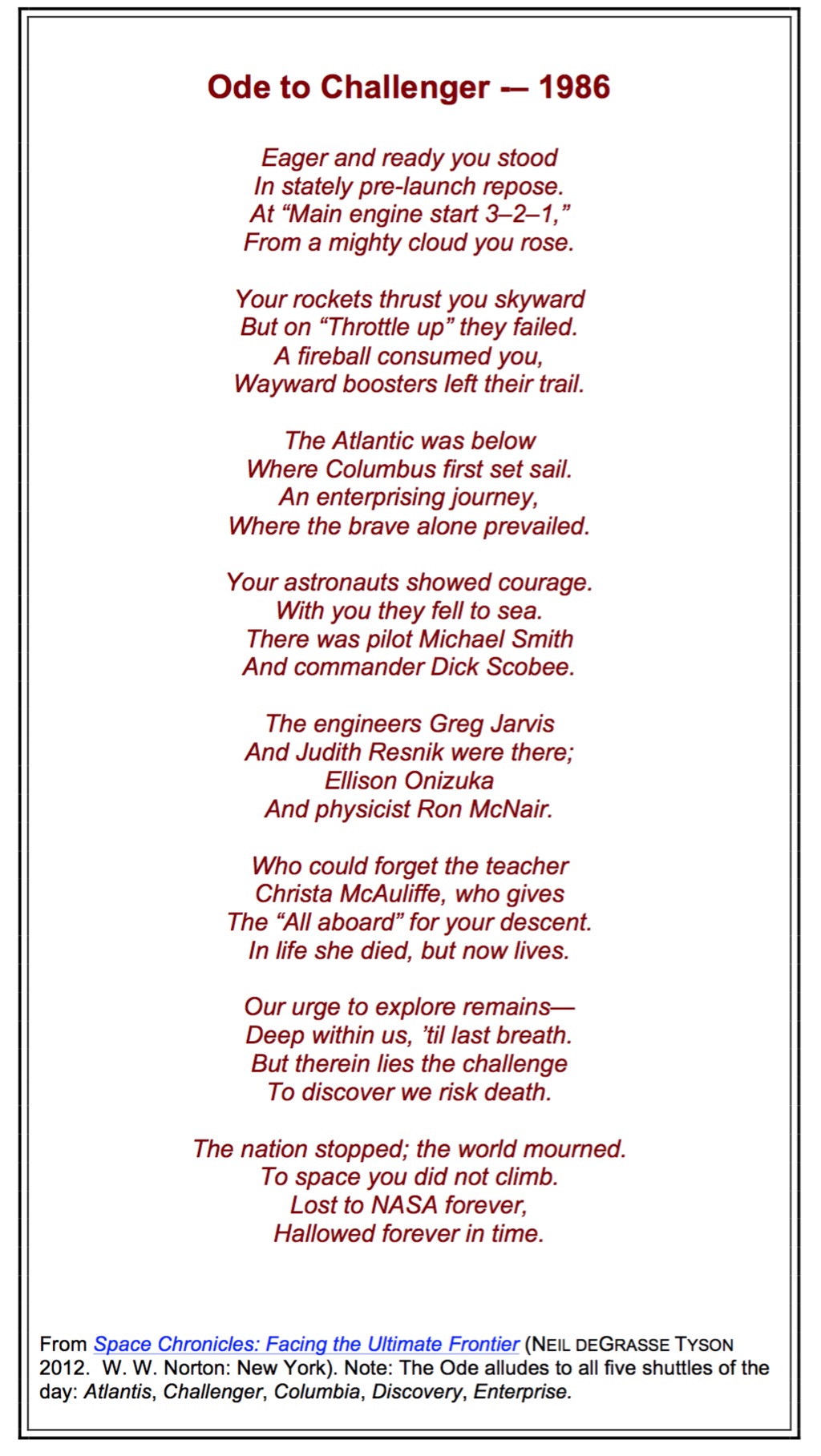Oh, I have slipped the surly bonds of earth,
And danced the skies on laughter-silvered wings;
Sunward I’ve climbed and joined the tumbling mirth of sun-split clouds –
and done a hundred things You have not dreamed of –
wheeled and soared and swung high in the sunlit silence.
Hovering there I’ve chased the shouting wind along
and flung my eager craft through footless halls of air.
“Up, up the long delirious burning blue
I’ve topped the wind-swept heights with easy grace,
where never lark, or even eagle, flew;
and, while with silent, lifting mind I’ve trod
the high untrespassed sanctity of space,
put out my hand and touched the face of God.
“High Flight” by John Gillespie Magee, Jr.
Every generation has at least one event during their formative years—childhood, young adulthood, & such—where they remember exactly where they were and what they were doing when they heard the news. It’s something of a cliché, really, but it’s still a moment frozen in time for each of us.
For my parents’ generation, it was the Kennedy assassination, November 22, 1963. For many, many people, myself included, it was September 11, 2001. For me, and many people around my age, it was also January 28, 1986, the day the Space Shuttle Challenger exploded 73 seconds after liftoff.
Seven people died that day, including the first teacher in space, Christa McAuliffe. I was in 5th grade at the time, and sending a schoolteacher into space was a big deal.
We were in the middle of math class when the principal announced over the PA that “the space shuttle exploded in space and crashed”—she wasn’t one to sugarcoat things. They used to let us watch the launches, but by 1986, I guess it had gotten pretty routine. I’m glad, though, that we weren’t watching it live that day. When we heard the announcement, the TV came out, and I don’t recall any more learning happening that day.
I was fascinated with space exploration as a kid, poring over the pictures of Mars returned by the Viking missions, and the pictures of Jupiter and Saturn by the Voyager missions. NASA was mapping the surface of Venus, and the Soviets had managed to land a few probes on the planet. They even got a few pictures before the Venusian atmosphere—temperatures hot enough to melt lead, air pressure hundreds of times greater than Earth’s, and rain made of sulfuric acid—did what you’d expect it to do to expensive machinery. Around the same time as the Challenger disaster, in January 1986, Voyager 2 sent us the first close-up pictures of Uranus (yes, we giggled at the time), followed by Neptune in 1989.
As kids, we knew that going into space was risky, but we were raised to see the United States as invincible. The Challenger disaster shook that view, and made us see that the world is a far more complicated place than our 10-11 year-old minds had ever imagined.
It affected far more than us kids, of course. NASA didn’t launch another shuttle for almost three years, when it launched the Space Shuttle Discovery on September 29, 1988. I’d go so far as to say the American space program has never been the same. NASA retired the space shuttle in 2011, and we still don’t have a replacement. American astronauts have to rely on the Russians to get into space right now.
Space exploration is part of a human tradition of a sort of bravery that borders on foolhardiness, but it’s something that humanity needs. I have the highest respect for the people who travel into space, because they do something I doubt I would ever dare to do—to venture headfirst into the unknown, damned be the risks. More than a thousand years ago, Polynesian sailors spread across the Pacific Ocean, a body of water bigger than all the Earth’s landmass combined, most likely often having no idea if any land lay ahead of them. The first people to settle Australia, around 40-50,000 years ago, probably traveled from islands that are now part of Indonesia. Even if the oceans were at their lowest point during the last Ice Age, they couldn’t see Australia from the nearest land. So much of human expansion has been a force for destruction, but we have, we can, and we must do better than that. We must keep looking to the skies, keep dreaming, and keep reaching.
For all my criticisms of Ronald Reagan, I remain grateful to him for the speech he gave that day, with an excerpt of the poem quoted at the top of this post. I also recall the words of John F. Kennedy, spoken long before my time, at Rice University on September 12, 1962:
We choose to go to the moon. We choose to go to the moon in this decade and do the other things, not because they are easy, but because they are hard, because that goal will serve to organize and measure the best of our energies and skills, because that challenge is one that we are willing to accept, one we are unwilling to postpone, and one which we intend to win, and the others, too.
And, of course, my hero, Carl Sagan:
The surface of the Earth is the shore of the cosmic ocean. On this shore, we’ve learned most of what we know. Recently, we’ve waded a little way out, maybe ankle-deep, and the water seems inviting. Some part of our being knows this is where we came from. We long to return, and we can, because the cosmos is also within us. We’re made of star stuff. We are a way for the cosmos to know itself.
Finally, a bit of poetry, via Neil deGrasse Tyson:


